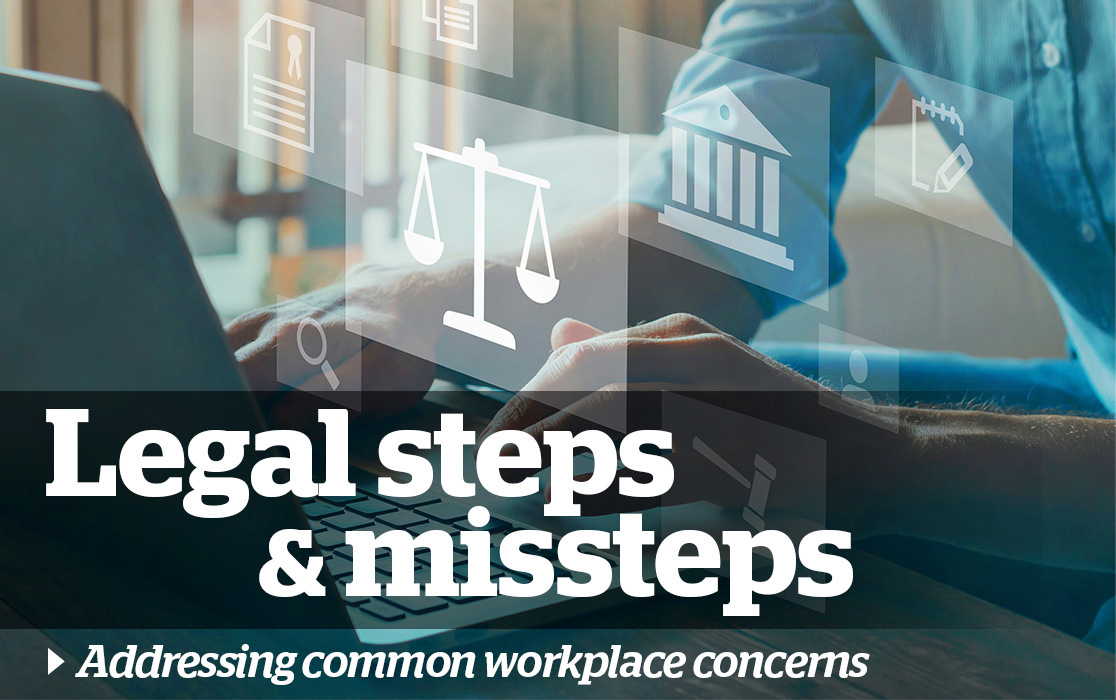

Columns/Blogs
Features
Bullying
Legal
Sexual Harassment
How ‘internet harassment’ could affect your workplace
By John Hyde

EDITOR’S NOTE: ‘Legal steps & missteps: Addressing common workplace concerns’ is a weekly Talent Canada series, in partnership with John Hyde of Hyde HR Law in Toronto. This series takes a deeper look at issues in which organizations can be proactive to prevent legal issues and highlight where common errors occur.
The Ontario Superior Court of Justice has just opened the door to a new category of personal injury claims, based on harassment over the internet.
Employers should take note, as failing to take active steps to protect employees from internet harassment could lead to costly missteps and serious liability.
What is internet harassment?
In a recent February 2021 decision, an Ontario court recognized a new category of personal injury in the form of “internet harassment.”
The facts of that case were extreme: The defendant, by the name of Atas, carried out a “systemic campaign of malicious falsehood,” including anonymous unsupported claims of pedophilia and sexual predation, against a wide-ranging group of individuals and organizations, including a former employer. The court found that Atas’ conduct was culpable because she intended to (and did) cause fear, anxiety, emotional upset, and harmed the dignity of her victims.
While most employers know better than to publicly sling mud at ex-employees, the new tort of internet harassment potentially expands a different kind of liability — workplace harassment from external sources.
A lesser-known employer obligation is the duty to protect employees from workplace harassment from members of the public.
The court’s decision in Atas now makes it very clear that internet harassment is a form of workplace harassment, which is serious, actionable, and results in liability.
The common employer misstep? Assuming that coping with online vitriol is just part of the job for some employees.
What kind of internet harassment must employers protect employees from?
Implausible as it may seem, some case law from the labour relations space suggests that employers have an active duty to respond to keyboard warriors who publish abusive messages about employees on social media platforms like Twitter.
In one famous decision, an Ontario arbitrator found the Toronto Transit Commission liable for creating a Twitter account, @TTChelps, which it described as a “forum to heap abuse” upon TTC employees.
While the @TTChelps did not participate in any of the abusive behaviour, it failed to respond adequately to violent, racist, and homophobic tweets about TTC employees, by merely directing the abusers to TTC’s help line or e-mail address.
Is social media anger on the rise? Tips for handling the trolls
The inherent difficulty in protecting employees from internet harassment
Protecting some employees from internet harassment may seem like a Sisyphean task. Social media allows customers to be more rude and less empathetic than ever before, and it is a constant, inescapable presence for many employees.
How do you protect a social media manager from rage-fuelled discussions on twitter? How do you protect service employees from cruel customers who are looking for an excuse to get angry? How do you protect employees from so-called “doxing” (a form of targeted internet harassment where an individual or organization’s previously private personal information is disclosed publicly)? Who protects the protectors?
These questions are becoming more and more pressing, as the law continues to adapt and recognize the harm that online words can inflict.
As this develops, more voices are joining social media platforms every day. At the same time, most service and retail companies now consider a social media presence to be mandatory, and the companies that opt out are being left behind.
Potential liability for employers
Employers now face two main sources of increased liability:
- First, employers may see a surge in terminated employees seeking to “tie in” claims of internet harassment to their wrongful dismissal claims.
- Second, more employees may quit claiming “constructive dismissal” based upon the employer’s failure to protect them from internet harassment.
Both sources of liability can be unexpected, and employers who take a passive approach to online harassment may be blindsided by unexpected demand letters from lawyers.
What can employers do to protect themselves?
This is a very big question for employers, and we expect that it will continue to be a big question for years to come as the law in this area develops.
Generally, we recommend that employers approach these issues with four main principles in mind:
- Recognition is key — employers need to be aware that online vitriol against employees is not just background noise; it is a serious potential source of liability.
- If a company has a social media presence, it must ensure it takes an active role in responding to abusive messages.
- As always, employers must ensure that all complaints of harassment from employees are investigated and responded to accordingly — including complaints that do not necessarily use the word “harassment.”
- In the event of any uncertainty, seek legal advice.
 John Hyde advises management on all aspects of employment and labour law, including representation before administrative tribunals, collective agreement negotiation, arbitrations, wrongful dismissal defence and human rights.
John Hyde advises management on all aspects of employment and labour law, including representation before administrative tribunals, collective agreement negotiation, arbitrations, wrongful dismissal defence and human rights.
Nicholas Goldhawk, an associate at Hyde HR Law, co-wrote this commentary.
Print this page